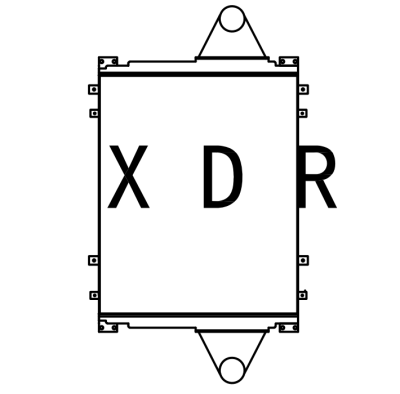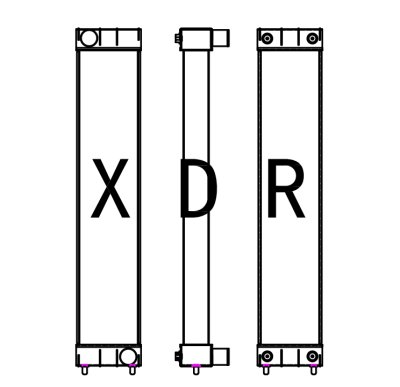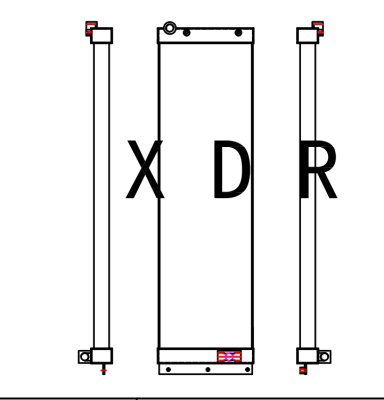How to install an additional radiator for your excavator?
Adding an additional radiator to your excavator can significantly improve its cooling capacity, especially in hot and demanding working conditions. This can help prevent overheating, extend the life of critical components, and ensure consistent performance. Here’s a step-by-step guide on how to install an additional radiator for your excavator:
Step 1: Assess the Need and Plan
Before you begin, it’s important to assess whether your excavator truly needs an additional radiator. Signs that you might need one include frequent overheating, high engine coolant temperatures, and reduced performance in hot weather.
Evaluate the Current Cooling System:
Check the existing radiator for any signs of damage or blockages.
Ensure that the fan and other cooling system components are functioning properly.
Use a temperature gauge to monitor the coolant temperature during operation.
Determine the Type and Size of the Additional Radiator:
Consult the excavator’s manual or contact the manufacturer to determine the appropriate size and type of radiator.
Consider the flow rate and cooling capacity required for your specific model.
Plan the Installation:
Choose a suitable location for the additional radiator. It should be in an area with good airflow and away from potential sources of debris.
Determine the necessary plumbing and mounting hardware.
Step 2: Gather the Necessary Tools and Materials
Additional Radiator: Ensure it is the correct size and type for your excavator.
Mounting Hardware: Bolts, nuts, and brackets.
Hoses and Clamps: High-quality, heat-resistant hoses and clamps.
Coolant: The same type and grade as your existing coolant.
Tools: Wrenches, pliers, screwdrivers, and a hydraulic hose cutter (if needed).
Step 3: Prepare the Excavator
Safety First:
Ensure the excavator is parked on a level surface and the engine is turned off.
Allow the engine to cool completely before starting the installation process.
Drain the Coolant:
Open the radiator cap and drain the coolant into a suitable container. Follow the manufacturer’s guidelines for proper disposal.
Step 4: Install the Additional Radiator
Mount the Radiator:
Position the additional radiator in the chosen location. Use the mounting hardware to securely attach it to the frame or body of the excavator.
Ensure that the radiator is level and stable.
Plumb the Hoses:
Connect the inlet and outlet hoses from the additional radiator to the existing cooling system. You may need to cut and fit the hoses to the appropriate length.
Use high-quality clamps to secure the hoses to the radiator and the existing cooling system.
Install the Fan (if applicable):
If the additional radiator comes with a fan, connect it to the electrical system. Follow the manufacturer’s instructions for wiring and mounting the fan.
Step 5: Refill and Test the System
Refill the Coolant:
Add the appropriate amount of coolant to the system. Ensure that the coolant mixture is correct (e.g., 50% coolant and 50% water).
Bleed the system to remove any air pockets. Refer to the excavator’s manual for the proper bleeding procedure.
Check for Leaks:
Start the engine and let it run at idle. Inspect all connections and hoses for any leaks.
Monitor the coolant temperature to ensure that the additional radiator is effectively lowering the temperature.
Step 6: Final Adjustments and Maintenance
Adjust the Fan (if applicable):
If the additional radiator has a fan, adjust the thermostat settings to ensure it activates at the appropriate temperature.
Regular Maintenance:
Regularly inspect the additional radiator and the entire cooling system for any signs of wear or blockages.
Clean the radiator fins periodically to ensure optimal airflow.
Check and top up the coolant as needed, and replace it according to the manufacturer’s recommendations.
Conclusion:
Adding an additional radiator to your excavator can greatly enhance its cooling capacity, leading to improved performance and longevity. By following these steps and ensuring proper installation and maintenance, you can keep your excavator running smoothly even in the most challenging conditions. If you are not confident in performing the installation yourself, consider consulting a professional mechanic to ensure the job is done correctly.




